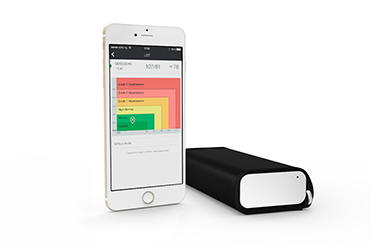Blood pressure is a critical measurement that tells you how hard the heart is working. Blood pressure levels may be normal, high, or low. High blood pressure or hypertension has been called the “silent killer” as it doesn’t present symptoms and can cause serious problems such as heart attack or stroke with little or no warning. Taking regular blood pressure measurements is vital to your heart health and understanding the numbers on your blood pressure monitor display is important.
What does your blood pressure reading mean?
Blood pressure is the measurement of the force of blood against the walls of the arteries in the heart and is measured in millimeters of mercury. The heart pumps blood around the body through the arteries, by contracting and relaxing. The pressure of blood flowing through the arteries varies at different times in the heartbeat cycle. Hence, there are two numbers recorded during a blood pressure reading, systolic and diastolic blood pressure.
What is systolic blood pressure?
Systolic pressure is the top number of the reading is the higher of the two and it measures the pressure in the blood vessels when the heart contracts or beats.
What is diastolic blood pressure?
Diastolic pressure is the bottom and the lower number measures the pressure in the blood vessels when the heart rests between heartbeats.
What should your blood pressure be?
Normal blood pressure is defined as having a systolic BP number between 120mmHg and 140mmHg and diastolic number between 80 and 90mmHg (mmHg is the unit used for measuring blood pressure, and stands for millimeters of mercury). Blood pressure is written with the systolic number over the diastolic, meaning the range for normal blood pressure is between 120/80 and 140/90.
Can blood pressure reading be too low?
Usually, the lower the blood pressure reading, the better, to a certain point. A reading lower than 90/60mmHg is generally considered low blood pressure. Doctors would consider chronically low blood pressure dangerous if it is accompanied by noticeable symptoms such as dizziness, fainting, dehydration, blurred vision, and other symptoms. Low blood pressure is not always a cause for concern, but you should see your doctor if you experience any symptoms of low blood pressure and are worried.
Which number in blood pressure reading is more important?
Typically more attention is given to the systolic blood pressure reading as this number tends to rise steadily with age and presents a risk for heart disease in people over the age of 50. That being said, both numbers are important to monitor, and elevated readings in either systolic or diastolic may be used to diagnose high blood pressure.
For more information about your blood pressure, check the articles ”What is high blood pressure and what does it really mean?” and ”What is low blood pressure? Quick facts on hypotension.”
Monitor your blood pressure with QardioArm smart blood pressure monitor. A medically accurate monitor that has been designed to fit everyday life, making it easy to take a blood pressure measurement anytime, anywhere. It’s portable, discreet and stores all your measurements on your smartphone or tablet, making it easy to email results to your doctor with a tap. Managing your blood pressure has never been easier!
Sources:




